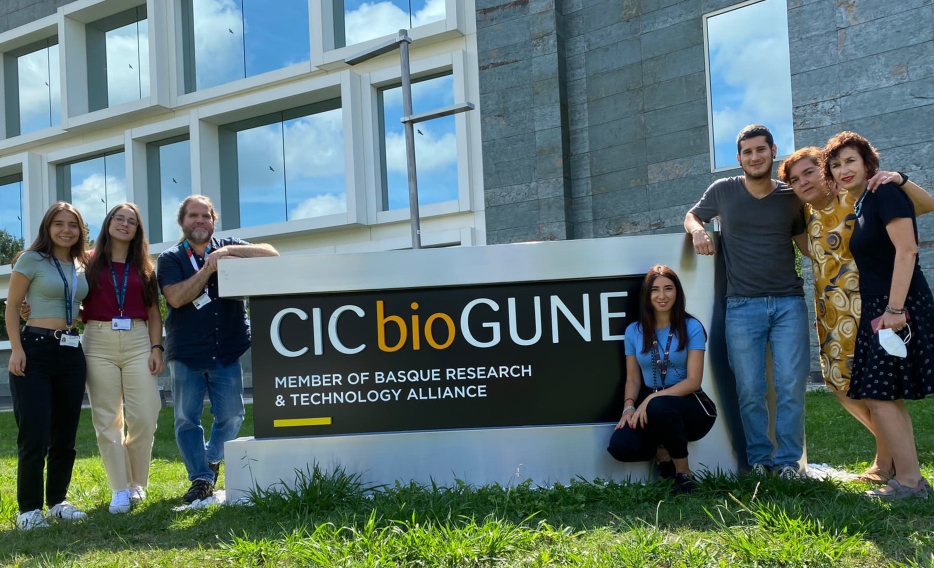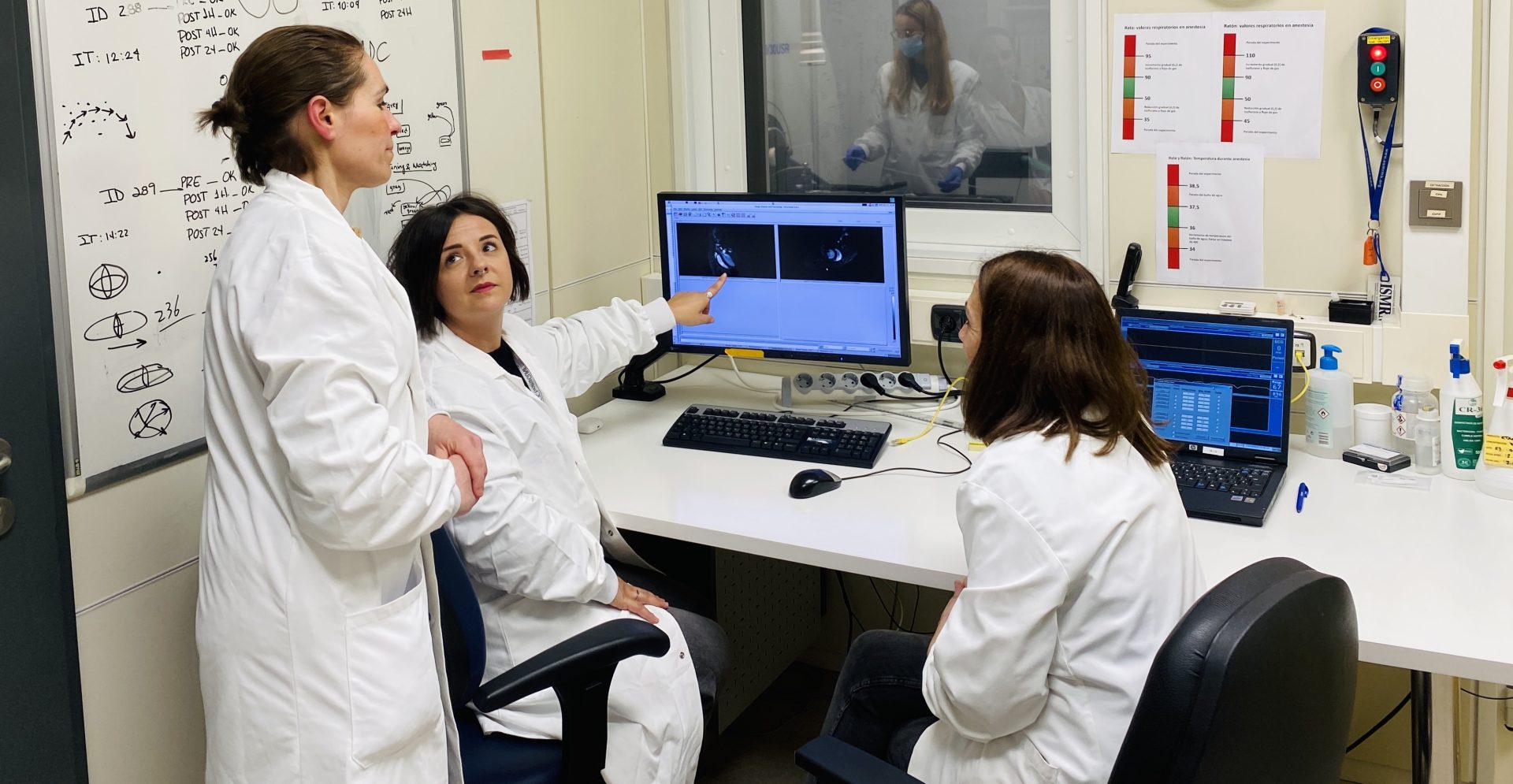A CIC bioGUNE team develops a strategy capable of identifying the cellular components on which E3 ubiquitin ligase enzymes act.

The specific substrates, ubiquitin target proteins, of most E3 ligase enzymes are unknown
Ubiquitin E3 ligase enzymes, which are very important for the functioning of the body, are responsible for selecting and tagging numerous proteins with ubiquitins to send them to the proteosome for degradation or to alter their cellular localisation
This research, which uses innovative strategies to redirect cell degradation and thus eliminate the proteins that cause various diseases, has been published in Nature Communications
A CIC bioGUNE team has developed a strategy capable of identifying the specific substrates on which E3 ligase enzymes act. The Ubiquitin and Development laboratory, led by Dr Rosa Barrio at CIC bioGUNE, a member of BRTA, has implemented the BioE3 strategy, which has identified the substrates of five different E3 ligases. These ligases, which are involved in human diseases, including some minority diseases and cancer, are located in different subcellular compartments and are regulated differently. 
The importance of the BioE3 strategy is related to the fundamental role of E3 ligase enzymes in the development of new therapies and drugs through Targeted Protein Degradation (TPD).
The work, which has been carried out over the last three years, has been published in the scientific journal Nature Communications. The research opens the door to the development of future drugs that target human proteins involved in diseases.
The work, which has been carried out over the last three years, has been published in the scientific journal Nature Communications. The research opens the door to the development of future drugs that target human proteins involved in diseases.
“Although there are more than 600 E3 ligases in the human proteome, only a handful of them are currently used for TPD drug development. Most of the substrates of E3 ligases are still unknown and there is a pressing need to characterise new E3s and to identify substrates of E3s of interest, as well as new substrates acquired after treatment with TPD drugs. However, the identification of direct substrates of E3s of interest remains a major challenge and considerable time has been spent in the search for robust and reliable methodologies for this purpose. In recent years, new strategies have been developed, although most of them are indirect and cannot distinguish direct substrates from secondary substrates or from other proteins that interact with E3s or interactors,” says Rosa Barrio.
Moreover, depending on the function of each E3, these enzymes may also be involved in various diseases (rare diseases, cancer, etc.), so that characterisation of their substrates will help us to understand their mechanism of action and to seek effective treatments for these diseases.
The ubiquitin-proteasome system is the basis of a fundamental process inside cells, which regulates the degradation of proteins that have reached the end of their active life, either because their function is no longer desired or because they are damaged. Specifically, the natural degradation process begins with the binding of a small protein, called ubiquitin, to the target proteins that need to be degraded, and this binding is carried out by a series of specific enzymes. Disturbances in this process can lead to multiple diseases, such as cancer or some neurodegenerative diseases.
“E3 ligase enzymes are important because they confer specificity to the system. On the one hand, they bind to these targets, which are their specific substrates to be degraded. On the other hand, they facilitate the binding of ubiquitin to these substrates, which are then marked for degradation. Thus, ubiquitinated proteins are recognised by the proteasome, which is the molecular degradation machinery. Despite being very important enzymes for the functioning of the organism, most of the specific substrates of the majority of E3 ligases are unknown,” explains Rosa Barrio in relation to the reasons behind the research.
Regarding the obstacles that have had to be overcome during this research, the CIC bioGUNE researcher stresses that “the main objective of our group, at the beginning of the project, was to develop a robust strategy that would allow the identification of specific substrates, and differentiate them from other proteins that could also interact with E3 enzymes, but which were not modified by them. To do this, we had to adapt the BirA and biotinylation technology. This took more than a year, as we had to perform multiple control and validation experiments to demonstrate that the identified biotin-tagged proteins were indeed the substrates of the E3 ligase enzymes. Finally, we were able to develop the BioE3 technology, and demonstrate that it is able to identify the substrates of the E3 ligases.
En la investigación del laboratorio de Ubiquitina y Desarrollo de CIC bioGUNE, que lidera la doctora Rosa Barrio, han participado el doctor James D. Sutherland, como investigador senior y responsable del desarrollo conceptual del proyecto; el doctor Orhi Barroso Gomila, que realizó su tesis doctoral en el grupo; y Laura Merino Cacho, que está realizando su tesis doctoral, así como otros componentes del grupo.
Además, el grupo ha colaborado con el doctor Ugo Mayor, investigador Ikerbasque en la Facultad de Ciencia y Tecnología de la UPV/EHU; con el profesor Alfred C.O. Vertegaal, investigador de la Universidad de Leiden (Países Bajos); y con el grupo de la profesora Simona Polo, investigadora en el IFOM (The AIRC Institute of Molecular Oncology, Milán, Italia).




